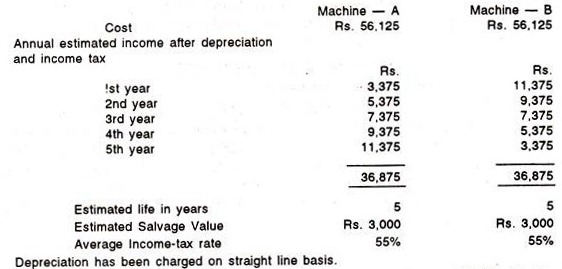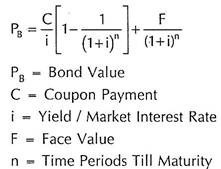Read this article to learn about the affect of business transactions on the elements of accounting equation.
Basically, there are three main variables or elements in any accounting equation viz.
(i) Assets,
(ii) Liabilities and
ADVERTISEMENTS:
(iii) Capital (Owner’s Equity).
These three elements are shown in the accounting equation as:
Assets = Liabilities + Capital
It is a golden rule that ‘Accounting equation remains balanced all the time’. This is because of the reason that any change resulting from the business transaction also balances its equation simultaneously. Business transaction may affect either only one element (Assets, Liabilities or Capital) or two elements, out of the three elements simultaneously (i.e., Assets & Liabilities, Assets & Capital or Liabilities & Capital). In some cases, business transactions may affect all the three elements, simultaneously (i.e., Assets, Liabilities and Capital) in a single transaction.
ADVERTISEMENTS:
Now, we shall move to analyze the effects of business transactions broadly in three categories viz.:
(i) Transactions affecting only one element
(ii) Transaction affecting any two of the three elements and
(iii) Transactions affecting all the three elements.
I. Transactions Affecting Only One Main Element:
These transactions may affect any one out of the three main elements.
ADVERTISEMENTS:
These transactions can be further classified into three types of transactions viz:
(i) Transactions affecting assets only,
(ii) Transactions affecting liabilities only and
ADVERTISEMENTS:
(iii) Transactions affecting capital only.
(i) Transactions Affecting Assets Only:
Business transaction may affect one asset on the one hand and another asset on the other hand.
Transaction:
Purchase of goods in cash.
ADVERTISEMENTS:
Affect:
This will increase asset (Stock) on the one hand and decrease asset itself (Cash) on the other hand.
(ii) Transactions Affecting Liabilities Only:
A business transaction may affect one liability on the one hand and another liability on the other hand.
Transaction:
ADVERTISEMENTS:
Bills Payable issued to Creditors.
Affect:
This will reduce one liability (Creditors) on the one hand and increase another liability (Bills Payable) on the other hand.
(iii) Transactions Affecting Capital Only:
These types of transactions affect capital only.
ADVERTISEMENTS:
Transaction:
Charging interest on drawings.
Affect:
Being an income of the business, this will increase the proprietor’s capital with the amount of interest on drawings and decreases proprietor’s capital with same amount.
Transaction:
Interest on capital.
ADVERTISEMENTS:
Affect:
Being an expense of the business, this will reduce the capital by the amount of interest and on the other hand interest on capital would be added to the capital of the proprietor.
II. Transactions Affecting Any Two Main Elements:
These transactions may affect any two out of the three elements and can be classified into three types of transactions viz.
(i) Transactions affecting Assets & Liabilities
(ii) Transactions affecting Assets & Capital and
(iii) Transactions affecting Liabilities & Capital.
(i) Transactions Affecting Assets & Liabilities:
These transactions can be sub-classified into two categories:
(a) Increase in assets & increase in liabilities and
(b) Decrease in assets & decrease in liabilities.
(a) Increase in assets & increase in liabilities:
A business transaction may increase the asset on the one hand and also increases liabilities on the other hand.
Transaction:
Purchased goods on credit.
Affect:
In this case, assets (stock) increase and liabilities (creditors) also increase with the same amount.
(b) Decrease in assets & decrease in liabilities:
A business transaction may decrease the asset on the one hand and also decreases liability on the other hand.
Transaction:
Cash paid to the holders of bills payable.
Affect:
In this case, assets (cash) decrease and liability (bills payable) on the other hand also decreases.
(ii) Transactions Affecting Assets & Capital:
These transactions can be sub-classified into transactions affecting:
(a) Increase in assets & increase in capital and
(b) Decrease in assets & decrease in capital.
(a) Increase in assets & increase in capital:
A business transaction may increase the asset and on the other hand increases capital.
Transaction:
Additional capital introduced by the proprietor.
Affect:
In this case, both assets (cash) and capital increase with the same amount.
(b) Decrease in assets & decrease in capital:
A business transaction may decrease asset and also decreases capital on the other hand.
Transaction:
Expense of the business paid.
Affect:
In this case, assets decrease (being cash paid) and on the other hand, capital also decreases (being expense of the business is a loss of the business).
(iii) Transactions Affecting Liabilities & Capital:
These transactions can be sub-classified into transactions affecting (a) Increase in liabilities & decrease in capital and (b) Decrease in liability & increase in capital.
(a) Increase in liabilities & decrease in capital:
A business transaction may increase the liabilities on the one hand and decreases the capital on the other hand.
Transaction:
Conversion of share capital into debentures.
Affect:
In this case, capital (share capital) decreases and liabilities (debentures) increase.
(b) Decrease in liability & increase in capital:
A business transaction may decrease the liabilities and on the other hand increases capital.
Transaction:
Conversion of debentures into shares.
Affect:
Being issuance of shares and redemption of debentures, this transaction would increase in Capital (Shares) and decrease in Liabilities (Debentures).
III. Transactions Affecting all the Three Main Elements:
A business transaction may affect all the three main elements of an accounting equation simultaneously. These transactions can be further classified into three types of transactions viz.
(a) Increase in Assets, Liabilities and Capital,
(b) Increase in Assets & Liabilities and decrease in Capital and
(c) Decrease in Assets & Liabilities and increase in Capital.
(a) Increase in Assets, Liabilities and Capital:
A business transaction may increase assets, liability and capital simultaneously.
Transaction:
Purchase of a running business (consisting assets of Rs. 5, 00,000 and liabilities of Rs. 3,00,000) for a purchase consideration of Rs. 1,50,000.
Affect:
In this case, assets and liabilities are increased with Rs. 3,50,000 (Rs. 5,00,000 – Rs. 1,50,000) and Rs. 3,00,000 respectively. It is to be noted that the business has purchased net assets (Assets-Liabilities) of Rs. 2,00,000 (Rs. 5,00,000 – Rs. 3,00,000). So, the capital would be increased with Rs. 50,000 (Rs. 2,00,000 – Rs. 1,50,000 = Rs. 50,000 Gain).
(b) Increase in Assets & Liabilities and Decrease in Capital:
A business transaction may on the one hand increase assets & liabilities and on the other hand decreases capital.
Transaction:
Purchase of running business (consisting assets of Rs. 5, 00,000 & liabilities of Rs. 3, 00,000) for a purchase consideration of Rs. 2, 50,000.
Affect:
In this case, assets and liabilities are increased with Rs. 2,50,000 (Rs. 5, 00,000 – Rs. 2,50,000) and Rs. 3,00,000 respectively. It is to be noted that the business has purchased net assets (assets – liabilities) of Rs. 2, 00,000 (i.e., Rs. 5,00,000 – Rs. 3,00,000). So, the capital would be decreased by Rs. 50,000 (Rs. 2,00,000 – Rs. 2,50,000 = Loss of Rs. 50,000)
(c) Decrease in Assets & Liabilities and Increase in Capital:
A business transaction may on the one hand decrease the assets & liabilities and on the other hand increases the capital.
Transaction:
Rebate of Rs. 200 allowed by the holders of bills payable of Rs. 1,200 on early payments.
Affect:
In this case, assets (cash) and liabilities (bills payable) are decreased with Rs. 1,000 & Rs. 1,200 respectively and capital would be increased with Rs. 200 (being gain of Rs. 200).
Illustration 1: (Effects of business transactions)
Give one example each of the following effect:
(a) Increases in assets, Increase in liabilities.
(b) Increases in assets, Decrease in assets.
(c) Increases in Liability, Decrease in Capital.
(d) Decreases in assets, Decrease in liabilities.
(e) Increases in assets, Increase in Capital.
Solution:
(a) Purchased good on credit.
(b) Purchased goods for cash.
(c) Expenses due but not paid.
(e) Cash paid to creditors.
(f) Additional capital introduced by the proprietor.
Illustration 2: Effect of business transactions:
Give at least one example for each of the following effects:
(a) Decrease in assets, decrease in liabilities.
(b) Decrease in assets, decrease in owner’s capital.
(c) Increase in one liability, decrease in another liability.
(d) Decrease in liabilities, increase in owner’s capital.
Solution:
(a) Payment of loan.
(b) Goods withdrawn for personal use.
(c) Bills accepted and issued to Creditors.
(d) Conversion of partner’s loan into capital.
Illustration 3 (Preparation of Accounting Equation):
Prepare the accounting equation to show the effect of following transactions in the books of M/s Atul:
Illustration 4 (Preparation of Accounting Equation):
Show the accounting equation related to business of Mr. X with the help of following transactions:
Illustration 5:





